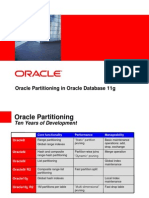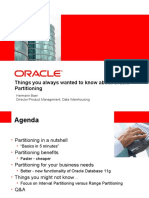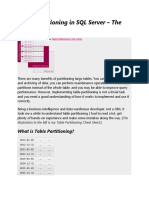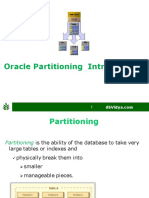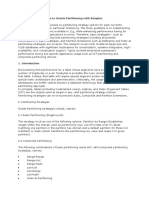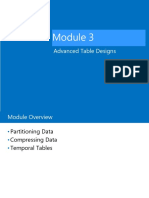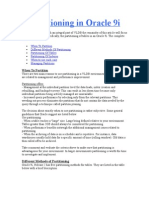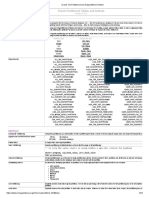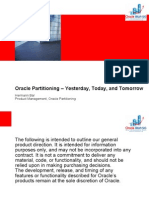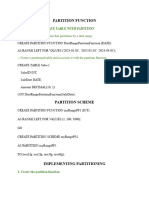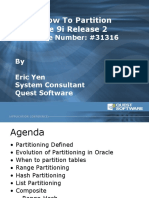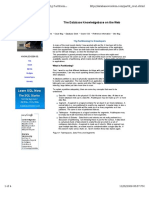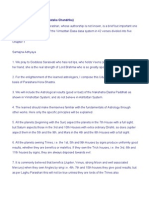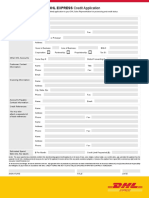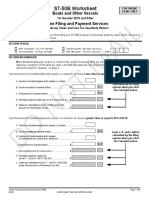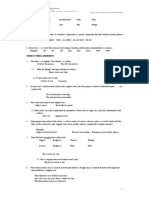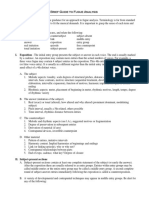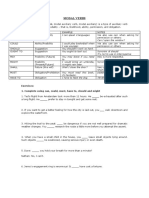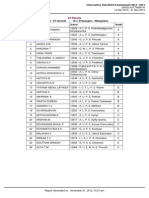0% found this document useful (0 votes)
73 views46 pagesTable Partitioning:: Secret Weapon For Big Data Problems
Table partitioning is a technique for managing large datasets that can help with performance and maintenance tasks. It works by dividing tables into multiple partitions that can each be maintained independently. This allows tasks like backups, index rebuilds, statistics updates, purging and archiving to be performed on individual partitions rather than entire tables. It also enables query optimization techniques like partition elimination and skip-scans to improve performance for queries that filter on the partition key column.
Uploaded by
powerCopyright
© © All Rights Reserved
We take content rights seriously. If you suspect this is your content, claim it here.
Available Formats
Download as PDF, TXT or read online on Scribd
0% found this document useful (0 votes)
73 views46 pagesTable Partitioning:: Secret Weapon For Big Data Problems
Table partitioning is a technique for managing large datasets that can help with performance and maintenance tasks. It works by dividing tables into multiple partitions that can each be maintained independently. This allows tasks like backups, index rebuilds, statistics updates, purging and archiving to be performed on individual partitions rather than entire tables. It also enables query optimization techniques like partition elimination and skip-scans to improve performance for queries that filter on the partition key column.
Uploaded by
powerCopyright
© © All Rights Reserved
We take content rights seriously. If you suspect this is your content, claim it here.
Available Formats
Download as PDF, TXT or read online on Scribd
/ 46
